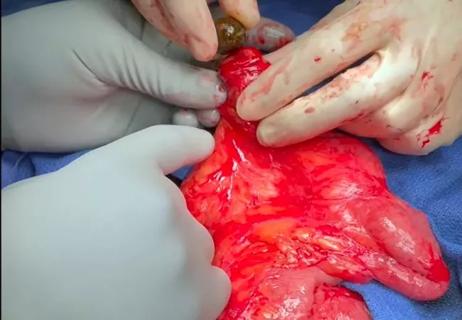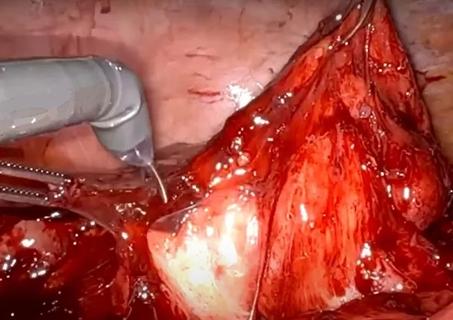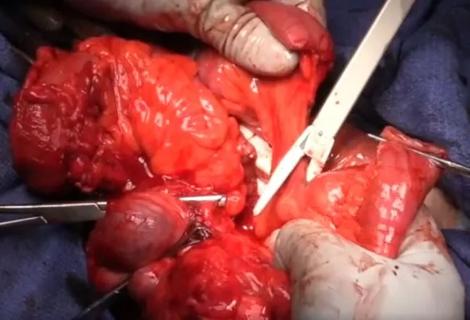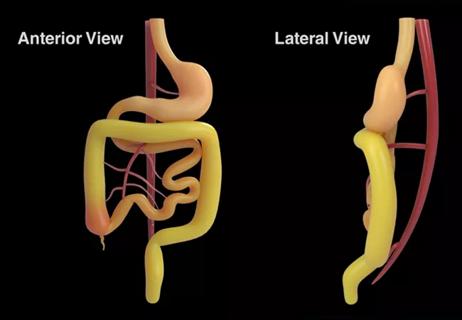The quality of rectal cancer surgery can be judged by several parameters. The most important is undoubtedly local disease control, ultimately manifest as acceptably low local recurrence rates. However, during the shorter term follow-up, certain surrogate histopathologic variables have been shown to have strong correlation, including the individual circumferential resection margin (Nagtegaal et al; Birbeck et al; Quirke et al), the number of lymph nodes harvested (Carlson et al), the distal resection margin (Boutros et al; Nicholls et al), and the quality of the mesorectal specimen (Quirke et al).
Cleveland Clinic is a non-profit academic medical center. Advertising on our site helps support our mission. We do not endorse non-Cleveland Clinic products or services. Policy
While each of these variables, when independently assessed, has been proven to have an ultimate impact upon rates of local recurrence to date, the amalgamation or creation of a composite score has not been shown to have any validity.
Unfortunately, when designing the Z6051 trial (Fleshman et al), we created a surrogate composite index, which sadly was not validated prior to its implementation. This composite assessment was undertaken in order to significantly reduce the number of patients needed for enrollment in this high-quality randomized controlled trial. Although independently no differences were found between the groups of patients who underwent laparoscopy or laparotomy relative to distal margin, circumferential resection margin or quality of TME when the three categories were amalgamated, there was a statistically significant difference. As a result of our analysis, our well-intentioned but nonetheless flawed study led to the conclusion that laparoscopy was not inferior to laparotomy for the curative treatment of rectal cancer.
Sadly, the ALaCaRT investigators adopted the Z6051 definitions two years after the onset of the Z6051 trial. Not surprisingly, the ALaCaRT investigators reached the same misleading conclusion as did the Z6051 investigators. Unfortunately, this composite score has never been shown to have any correlation with local recurrence.
In a similar method, Martinez-Perez and coworkers decided, without any objective evidence relative to local recurrence to do so, to morph Quirke’s definitions and include “nearly complete” and “incomplete” TME in a new category to which they gave the appellation “non-complete.”
I am unsure as to what led the authors to create this new non-validated classification ― when, in fact, pathologists seem to generally classify “nearly complete” with “complete” rather than with “incomplete.” Had Martinez-Perez and colleagues grouped the “nearly complete” TMEs with the “complete” TMEs rather than with the “incomplete” (as is favored by many, if not all pathologists), they would have undoubtedly reached very different conclusions.
Both of these articles serve as strong cautionary notes against relying upon new classifications prior to their validation.
I certainly hope that the early data publication on the Z6051 study in which I was a principle investigator, the ALaCaRT trial and the recent systematic review and meta-analysis by Martinez-Perez, did not decrease our collective enthusiasm to continue to offer oncologically sound minimally invasive rectal cancer operations to our patients.
We certainly know by experience that laparoscopy can result not only in equivalent but in superior results (Boutros et al; van der Pas et al; Bonjer et al). Thankfully, the recent Z6051 three-year local recurrence and survival study proved no differences between laparoscopy and laparotomy. Thus, the composite end-point was misleading in intimating that laparoscopy was not noninferior to laparotomy for the curative treatment of rectal cancer. Therefore, it was not the technique but the terminology that we can blame for the misleading “evidence” that laparotomy was superior to laparoscopy.

Technique is useful in patients with diffuse stricturing Crohn’s jejunoileitis

Lifesaving procedure, continued pregnancy and healthy delivery highlight program’s advancement

Robot-assisted technique provides an alternative to open surgery in a complex case

Cleveland Clinic team blends extended mesenteric excision and Kono-S anastomosis

Continued pregnancy and delivery are only the second successful outcome worldwide

FETO and twin-twin transfusion syndrome treatments are next

New procedure eliminates volvulus risk

Measuring outcomes becomes more granular with surgeon-entered data